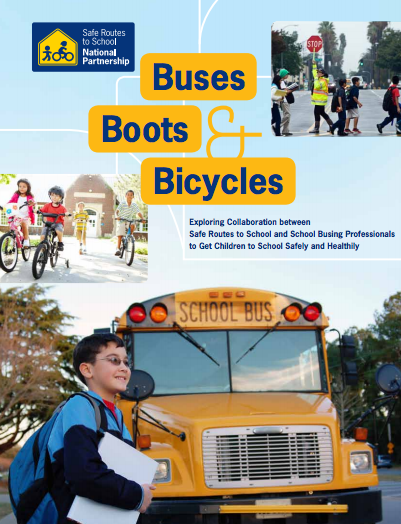
 This blog post was written by Mikaela Randolph, shared use campaign manager, and Keith Benjamin, street scale campaign manager.
This blog post was written by Mikaela Randolph, shared use campaign manager, and Keith Benjamin, street scale campaign manager.
Resource Library
This is an updated version of the State of the States report.
 On July 22, Margo Pedroso and I joined Advocacy Advance to host a webinar reviewing
On July 22, Margo Pedroso and I joined Advocacy Advance to host a webinar reviewing
Released in 2014 by Smart Growth America, Measuring Sprawl 2014 examines how some places in the United States are sprawling out and some places are building in compact, connected ways.
 The back to school essay topic “What I did on my summer vacation” is a time worn favorite, particularly for elementary teachers and students. One day late in August, Grandma asked my niece and nephews, “What was your favorite part of your vacation at the beach last week with your family?” Both of my nephews chose a bike-related activity: “Riding my bike to the smoothie store by myself wi
The back to school essay topic “What I did on my summer vacation” is a time worn favorite, particularly for elementary teachers and students. One day late in August, Grandma asked my niece and nephews, “What was your favorite part of your vacation at the beach last week with your family?” Both of my nephews chose a bike-related activity: “Riding my bike to the smoothie store by myself wi
The guide is intended to provide examples of noteworthy SRTS program practices and managementapproaches. The guide was completed in partnership with the National Center for Safe Routes to School(National Center) with funding from the FHWA SRTS program.
 October is such a great time of year. And I love International Walk and Bike to School Day which its taking place this year on October 9! There is so much to celebrate during this October, here is my top five list:
October is such a great time of year. And I love International Walk and Bike to School Day which its taking place this year on October 9! There is so much to celebrate during this October, here is my top five list:
This report provides an introduction to different types of walking facilities that can be constructedin rural areas. It includes case studies of a number of communities building creative and cost-effective walking facilities.
 On November 2, bicycle advocates in Fairfax County, Virginia came together for the second Fairfax Bike Summit hosted by the Fairfax Advocates for Better Bicycling (FABB).
On November 2, bicycle advocates in Fairfax County, Virginia came together for the second Fairfax Bike Summit hosted by the Fairfax Advocates for Better Bicycling (FABB).
This resource provides tips for a student audience about bike safety.

Co-Authors:
Eric Bruins, Los Angeles County Bicycle Coalition
Jessica Meaney, Southern California Policy Director, Safe Routes Partnership
These briefings sheets were developed with funding support from the National Center for Safe Routes to School. The briefing sheets are intended for use by transportation engineers and planners to support their active participation in the development and implementation of Safe Routes to School programs and activities.
 The Portland, Oregon region, in many regards, is ahead of the curve when it comes to active transportation. The “Bike Bill” (ORS 366.514), passed more than 40 years ago by the Oregon Legislature in 1971, requires the inclusion of facilities for pedestrians and bicyclists wherever a road, street or highway is built or rebuilt.
The Portland, Oregon region, in many regards, is ahead of the curve when it comes to active transportation. The “Bike Bill” (ORS 366.514), passed more than 40 years ago by the Oregon Legislature in 1971, requires the inclusion of facilities for pedestrians and bicyclists wherever a road, street or highway is built or rebuilt.
This report describes relationships between transportation policies and plans and health and potential to implement policies that make transportation more healthy, green, safe, accessible and affordable.
 There were two significant developments this month in Washington D.C for Safe Routes to School. First, the U.S. Department of Transportation (USDOT) released its proposed rule addressing safety on our roads.
There were two significant developments this month in Washington D.C for Safe Routes to School. First, the U.S. Department of Transportation (USDOT) released its proposed rule addressing safety on our roads.
Transportation for America wrote the report to highligh strategies and investment opportunities to preventable pedestrian deaths.
This research synthesis examines studies indicating that racial and ethnic minorities and lower-income people live in communities that do not provide as many built and social environmental supports for physical activity and are not as supportive of physical activity.
 Today, most student transportation departments around the country focus primarily on getting students to school on yellow school buses. But student transportation isn’t just about school buses. Students are also getting to school by foot, bicycle, car, and public transportation.
Today, most student transportation departments around the country focus primarily on getting students to school on yellow school buses. But student transportation isn’t just about school buses. Students are also getting to school by foot, bicycle, car, and public transportation.
This policy statement highlights how the built environment of a community affects children’s opportunities for physical activity. Neighborhoods and communities can provide opportunities for recreational physical activity with parks and open spaces, and policies must support this capacity.

